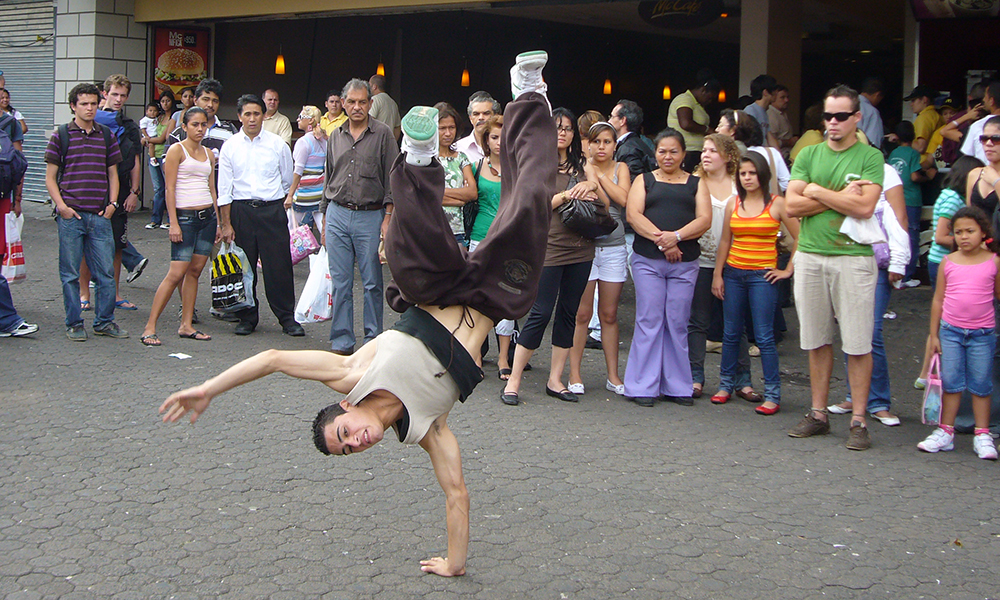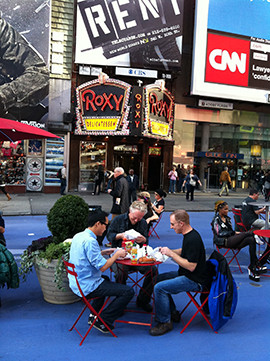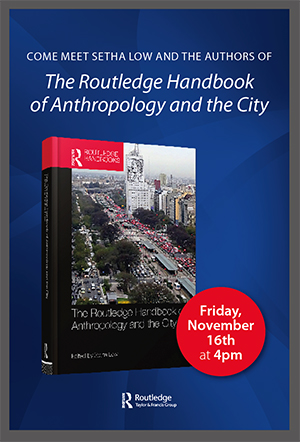Why Public Space Matters
Researcher:
Setha Low, Professor of Environmental Psychology, Anthropology and Geography and Director of the Public Space Research Group at the Graduate Center of the City University of New York. Research affiliate of the Center for the Future of Places, Stockholm, Sweden

Funding from the Center for the Future of Places was used to write a book proposal and complete four chapters of the final manuscript. Two presses have reviewed those chapters and both are interested in publishing it (Oxford University Press and MIT Press). The reviews from Oxford were outstanding and supported the plan to write a book that would reach a broad public. MIT Press suggested a more technical book for planner. Funding was also used to
complete the final edits on two books and to write two articles for publication.
Book Summary
This book aims to realign our urban priorities and demonstrate the psychological, social, infrastructural and environmental impact of public space. Public space was added to the New Urban Agenda passed by the United Nations in December 2016. The mandate now is to demonstrate the potential of this right, communicate its importance and support the planning, design, management, and funding of public space.
The first step is to make available evidence of why public space matters to individuals, neighborhoods, regions and states. The second step is to examine why some cities and towns are losing their historically valued public spaces—or not building new ones—due to a variety of encroachments including displacement by commercialization, private development, secured access and social exclusion. The final step is to identify what can be done at the grassroots level to promote public spaces through research and action, and globally through international groups working together on guidelines for the planning and design of integrated and inclusive public spaces.

The discussion is organized around four questions:
Part I answers the basic question “what is public space” from a historical, cultural and design point of view. It begins with a broad definition that includes neighborhood parks, plazas and libraries, but extends to the street system, waterways, transportation infrastructure and environmental linkages. Part II lays out why public space matters and highlights reasons why we should care. It looks at the psychological, social, environmental, economic and political outcomes of successful public spaces and how they produce a flourishing society through contributions to health and well-being; economic resilience and the informal economy; cultural heritage and collective memory; creativity, play and learning; environmental sustainability; and social justice.
Part III pinpoints contemporary threats to public space and how they can be transformed into opportunities to revitalize and promote new uses. Part IV discusses what can be done to improve and protect public space in the future. It offers guidance on how to undertake grassroots research and utilize local knowledge to take back public space and contribute to a more vibrant and sustainable world.
Part I. Public Space Matters
Chapter 1. Public Space Contributes to a Flourishing Society: Contact, Connection and Culture
Chapter 2. What is Public Space?
Part II: Why Should We Care?

Chapter 3. Social Justice and Democratic Practices (Jones Beach)
Chapter 4. Cultural Continuity, Cultural Identity and Social Cohesion (Parque Central and Plaza de la Cultura, Battery Park City)
Chapter 5. Health, Well-being and Resilience (Walkway)
Chapter 6. Play and Creativity (NYC, Lake Welch, Panama City)
Chapter 7. Informal Economy and Social Capital (Moore Street Market, Street Vendors in Buenos Aires, Carteneros in Chile)
Chapter 8. Environmental Sustainability and Disaster Recovery (Fire Island, Puerto Rico, Andes)
Part III: Threats to Public Space
Chapter 9. The Fear of Others: Securitization
Chapter 10. Public Space and Urban Development: Privatization and Marketization
Part IV: What Can We Do About it?
Chapter 11. Ways to Learn About Public Space (TESS in Tompkins Square and City Park in Nairobi)
Chapter 12. Opportunities to Promote, Design and Protect Public Space
